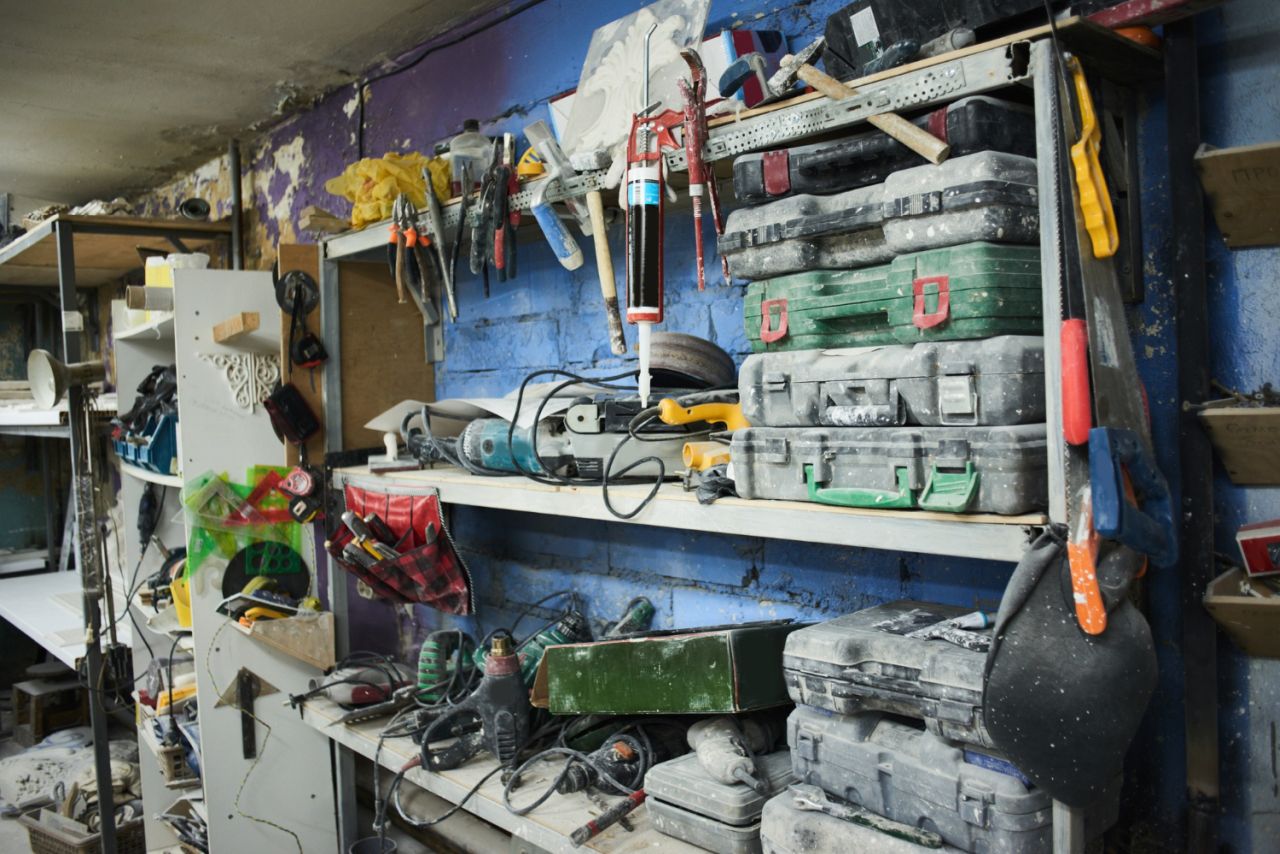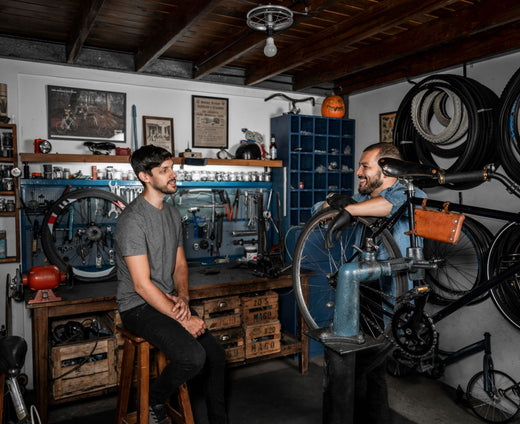Have you ever entered a neighbor's garage and been hit with a wave of mustiness? When summer came, how hot was the inside, and when winter came, how cold?
Oftentimes, garages are forgotten about. Many people don't give much thought to them beyond their function as storage spaces or secondary living quarters. However, a major faux pas is a lack of garage ventilation.
There are two major drawbacks to a garage with inadequate ventilation. There's the obvious risk of letting car exhaust and chemicals from any tools or machines you use in the garage into the rest of the house.
Second, the summertime heat that accumulates in an attached garage also warms the rest of your house, which can be quite uncomfortable.
For colder months, the attached garage can serve a similar purpose.
Oftentimes, homeowners will instal an exhaust fan or other ventilation equipment in their garages to ensure adequate airflow.
Here are some guidelines to help you evaluate your garage and select the appropriate tools for the job.
The Perils of an Insufficiently Ventilated Garage
A Garage Without Airflow is a Health Hazard
A lot of potential health and safety issues can arise in the garage.
There's the obvious risk of power tools and automobiles, but the garage is also a common place to keep harmful chemicals like paint, varnish, and thinners.
Garages that don't have adequate ventilation can be a breeding ground for noxious gases that can be hazardous to human health.
Carbon Monoxide: The Quiet Killer
From your car to your gas-powered lawnmower, combustion engines produce carbon monoxide as a waste product.
Carbon monoxide is naturally present in the atmosphere, but it becomes dangerous when it accumulates in confined spaces.
Carbon monoxide builds up rapidly in garages without proper ventilation. This gas is a slow, steady poison once it enters the human body.
Carbon monoxide's long half-life means that its effects can build up over time before the victim realises they're in danger.
As the gas prevents oxygen from reaching the brain, the victim experiences a gradual onset of fatigue and dizziness before eventually collapsing and being rendered helpless.
Preventing Carbon Monoxide Poisoning
Having a carbon monoxide detector that sounds an alarm when dangerous levels of the gas are present is probably the single most important thing you can do to protect yourself and your loved ones from this poison.
If you want to be sure you're notified of any issues, even if the garage is well ventilated, instal one near the door leading into the house.
Carbon monoxide levels can be kept under control by regularly servicing any equipment that generates it.
Your garage is the perfect place to set up any indoor-use equipment, but make sure to follow the manufacturer's installation instructions.
Finally, to prevent potentially fatal levels of carbon monoxide, as much of the poisonous gas as possible should be vented directly outside the garage.
Lack of detectability by human senses is a major risk factor for CO gas.
Because carbon dioxide has no discernible physical properties, you may not even realise it is present until it is too late because of its insidious effects on your body.
Other Threats Made Possible Due to Poor Ventilation

If you keep hazardous materials like paint, oil, and cleaning supplies in your garage, then you should know that a lack of ventilation can lead to the concentration or even accidental mixing of these toxic substances.
Mustard gas is made with everyday items surprisingly often, and this is just one example.
Mustard gas, one of the most feared weapons of World War I, can be created by mixing a bleach-based cleaner with another powerful cleaning solvent, hydrochloric acid.
Inadequate ventilation in a garage can make it difficult to escape a dangerous situation in which substances have been accidentally mixed.
If you spend a lot of time in the garage, you should know that poor ventilation can cause a number of health problems.
Mold thrives in damp, poorly ventilated areas, and this has been linked to serious cardiovascular problems.
Without proper ventilation, you risk breathing in harmful particles while painting, varnishing, or doing any other work that kicks up dust.
Why You Should Ventilate Your Garage
Heat from Vehicles
The metal parts of a car release heat into the space, making a garage unbearably hot and stuffy in the summer.
This warm air can remain in a garage for a long time after a car has been parked there.
The issue of stifling heat can be exacerbated by the presence of an insulated garage door.
Ventilation is necessary to remove excess heat and prevent it from building up.
Automobile Exhaust Fumes
Inhaling deadly exhaust fumes that cannot escape a closed space is a surefire way to meet an untimely end if you happen to be nearby.
When the garage is attached to the house, the fumes are concentrated and pose a greater threat to the health of the residents.
Therefore, it is crucial for health and safety reasons to swiftly remove the exhaust from the garage.
Workspace Heat
The garage is a popular place to do home improvement and hobby work. The heat and odours from a poorly ventilated garage can make it difficult to get work done.
Household cleaners, insecticides, lawn treatments, and other products stored in the garage pose a health risk if anyone were to accidentally come into contact with them.
It's possible that even momentary exposure to the airborne chemicals in these products could be harmful.
Solutions for Ventilating a Garage
Vents, such as roof turbine vents, can be installed to improve air circulation and comfort in a garage.
While opening a window can help, it is more effective to instal a window fan.
Putting in an air conditioner in a window will allow the stale air inside the garage to escape while bringing in fresh air from outside.
Why Your Garage Might Not Need Ventilation
However, not every garage requires air circulation. Typically, this is a question that can only be answered by observing how you make use of your garage and how much time you spend there.
Some garages don't require ventilation because of these factors.
Detached Garages
Your detached garage may not need ventilation if it is not attached to your house.
Detached garages reduce the risk of exposure to harmful gases like carbon monoxide and other toxic byproducts because there is no passageway for the fumes to enter the home's living quarters.
Nevertheless, the advantages of better ventilation and air conditioning will still apply.
You’re Not Actually Using It
These things are inevitable. Some parking spaces are simply unused. Perhaps you're just giving your garage a good cleaning out or you're trying to decide what to do with the space now that it's empty.
When a garage isn't being used, ventilation isn't necessary.
Types of Garage Ventilation
Not all garage ventilation systems are created equal. As a matter of fact, there are many varieties available, and there's at least one that you must already possess.
Let's examine some garage ventilation options.
Overhead Doors
You can breeze through this one. If you have a garage fan installed, opening the garage door will help circulate the air inside.
Most homes have garages with overhead doors. Getting your car in and out of the garage is essential.
The catch is that additional ventilation methods are typically required. When you leave your garage door open, bugs, rodents, leaves, and other things can find their way inside.
In addition, it will nullify the effects of any active heating or cooling system in the garage.
Windows
In order to maintain a healthy temperature and humidity level in your garage, a window is a great addition.
Garages, like homes, benefit from fresh air flow through the use of windows.
Additionally, you can instal a small window wan to either let in outdoor air or expel harmful vapours from the garage.
Exhaust Fans and Roof Vents
These are two of the best ways to actively ventilate your garage, and they often go hand in hand.
One method of providing fresh air to a garage is with an exhaust fan, which can be mounted on the ceiling or one of the walls.
To vent the air from your garage to the outdoors, you'll need to instal an exhaust fan and connect it to a hose or duct inside the garage (source).
Both powered and unpowered roof vents exist.

Due to factors like the attic's total square footage, the roof's pitch, and the presence or absence of vapour cooling, these vents can be trickier to instal than others.
IN A GARAGE THAT IS NOT HEATED, DO I NEED A VAPOR BARRIER?
There is, alas, no easy answer to this question, and a search for it on the Internet will turn up a plethora of conflicting claims and opinions.
Below, we will provide a brief scientific overview of vapour barriers, followed by some suggestions for their use.
The vapour will travel from the warm area to the cold area as the humidity level drops. Vapor will try to move through the wall materials and escape an insulated garage because it is warmer inside than outside.
Wallboard, insulation, and finally sheetrock will all be permeable to the vapour. This is sometimes referred to as "breathing room" in a garage.
Several competing arguments will be discussed below. In the south, where the weather is warmer and more vapour is likely to be transferred from the garage to the outside, some argue that installing a vapour barrier is counterproductive because it will trap this vapour inside the garage and lead to damp and mould.
Some say it should be allowed to escape naturally through the construction materials. It appears that the vast majority of people think that unheated garages that have been insulated should have some sort of ventilation system installed.
You need a vapour barrier if the garage is heated to prevent condensation and mould growth. While it's true that your vehicle can warm up the garage on its own, this is only the case if you leave it in the garage overnight to get ready for the day.
Some people say a vapour barrier is needed because of local ordinances.
Since rules can change from one jurisdiction to another, it's best to research the specific laws in your area.
Additional Considerations for Air Ventilation
The fan will do wonders in terms of reducing the heat and odours in your garage. As an exhaust fan can only do so much, there are other precautions you can take.
Garages that face south or west suffer the most from the sun's heat throughout the day.
A fan will help, but it will be difficult to completely cool a south or west facing garage in the summer.
Also, if at all possible, delay putting vehicles in a garage.
It's important to remember that vehicles have been generating an enormous amount of heat while driving, and that it will take some time for the engine's mechanical components to cool down.
If you plan on being away from the car for less than 15 minutes, you may want to leave it in the driveway for a while to let it cool down.
It will reduce the amount of heat that is transmitted into the garage.
Finally, insulated garage doors are great for keeping the cold out in the winter, but they can actually make things worse when the weather gets warm.
Hot air from the garage doesn't escape through the door because of the insulation.
It's not a big deal if you live somewhere with a long, cold winter. However, if you live in a region with a milder climate, you shouldn't install this garage door.
Garage Air Flow and Ventilation
Not only is it unpleasant to spend time in a garage that is abnormally hot or cold or has a pungent odour, but it can also have a negative effect on the rest of the house.
Adjacent rooms will be affected by the garage's temperature. This flow of air, whether hot or cold, can't be stopped.
So, having lots of fresh air circulating is the best way to combat the issue.
The temperature in your garage can never be lower than the ambient air outside.
However, by installing exhaust fans in the ceiling and/or walls, the temperature can be kept manageable.
The most efficient exhaust fans are mounted high on the wall or ceiling, directly opposite the main garage door.
The potential for accidents is always present. You may have more time to escape toxic clouds or avoid breathing in a harmful substance if your garage is well ventilated. If you're worried that your garage doesn't have enough air flow, you should consult a professional.





